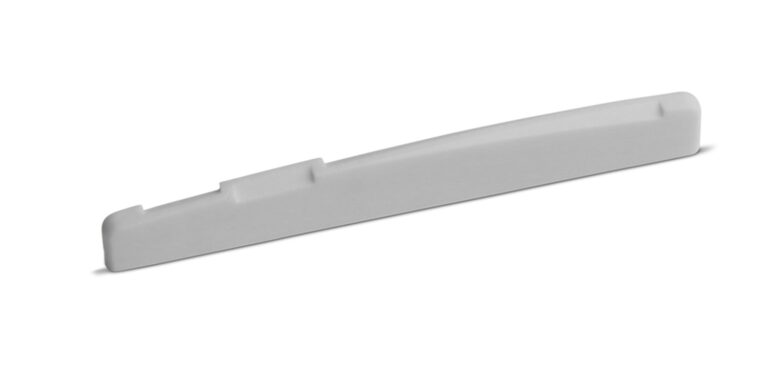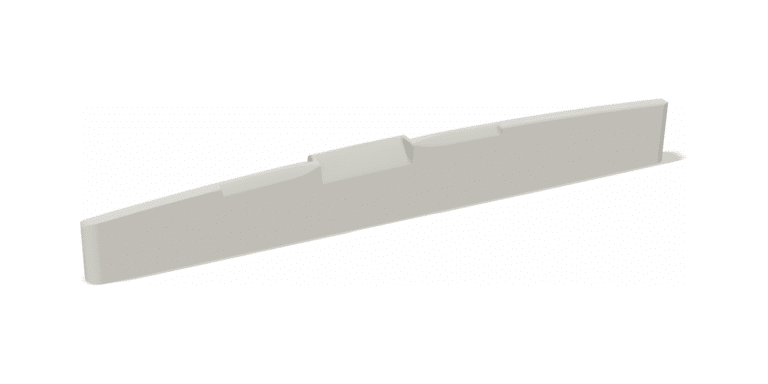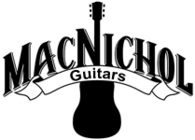Find the Right Saddle for Your Epiphone® Acoustic Guitar
Do you need an Epiphone steel string acoustic guitar saddle? Epiphone began making instruments in 1873, and thus finding the correct saddle for your Epiphone can be difficult as there’s not a single saddle size for all Epiphone guitars.
This article provides tips on finding the right saddle for your Epiphone flat top steel string acoustic guitar, but we suggest that you also measure your guitar’s current saddle and slot for a proper fit. If you are not the original owner, at some point someone may have installed a different saddle or have adjusted the saddle slot, producing different specs from the factory’s.
Please Note: Gibson and Epiphone acoustic guitars use different saddle types, even on models with the same name, such as the Dove. Please see our article on Gibson acoustic guitar saddles.
Step One: Determine Fretboard Radius
Epiphone acoustic guitars often have a 12 inch fretboard radius, but please note that some Epiphones have either a 14 or 16 inch radius fretboard. For example, some previous Masterbilt models used a 14 inch radius fretboard, such as the DR-500MCE. The Epiphone Slash J-45 uses a 16 inch radius fretboard.
If you have a recent model, you can check fretboard radius specs on the Epiphone website. If you have an older model, find your guitar’s serial number and contact Epiphone and ask what the fretboard radius is for your year/model.
Please note that if you are not the original owner, another neck may have been installed at some point. You may want to check the fretboard radius with a gauge.
Step Two: Determine Saddle Type
Epiphone acoustics often have one of the below saddle types, but please note that other saddle types may have appeared during Epiphone’s lengthy history.
Through Saddle
Prior to the 1960s, Epiphone often made arch top guitars, but did make some flat top steel string guitars. Those flat top models often have a through saddle, which will go through the bridge. These saddles might be glued in. This type of saddle requires significant skill and knowledge for replacement. We advise that you do not attempt DIY and instead hire a professional guitar technician.
Non-Compensated Drop In Saddle
For Epiphone models built from the 1960s to around 2000 Epiphone often used non-compensated drop in saddles. Height, length, thickness will vary significantly and so there is no single non-compensated saddle size for Epiphone models. You will need to measure your saddle’s slot to find the correct fit. Some current models will also use a non-compensated saddle, such as the Chris Stapleton model.
Please note that a drop in saddle means that the saddle is not glued in, but still may require adjustment to a specific guitar.
Height Adjustable Saddles
A number of Epiphone models from the 1960s to the 1980s had height adjustable saddles. This saddle type was connected to a bridge that contained metal hardware that allowed for easy saddle height adjustments. Although a great idea for playability adjustments, the saddles are often regarded as tone killers, with some guitarists opting to replace the entire bridge. Materials and sizes varied, so please measure your current saddle carefully.
Note: A height adjustable saddle is different from a floating bridge, which is found on an archtop guitar. Please see the following link: Floating Bridge Information
B Compensated with Slanted Bass
Since 2000, many Epiphone acoustic saddles are B compensated with slanted bass. These saddles are often 75 mm long, but will vary from 73 to 78 mm in length, so please measure your current saddle before ordering a replacement. These saddles are often 3.2 mm thick, and have a 12 inch radius. Height is typically around 9 to 10 mm. Please see our saddles for Epiphone guitars.

Forward Line B Compensated Saddle
On rare occasions, you might find an Epiphone that has a B compensated saddle, but does not have the slanted bass compensation. For example, the Epiphone website shows the Frontier (USA Collection) model with a B compensated saddle, although this may have just been for the prototype as many production Frontier models have a non-compensated saddle. Please see our Guide to B Compensated Saddles for more information.
BGD Compensated Saddle
The Epiphone Slash J-45 model is distinct among Epiphones in many ways, but notably it has a 16 inch fretboard radius, along with a distinct BGD compensated saddle, Tusq PQ-9274-CO. This saddle has the treble E, A, and bass E all forward toward the soundhole. The B and D strings rest in the center, and the G is backward toward the bridge pins. For a similar saddle in bone, please see our BGD Compensated Saddle.
Please note that the saddle used for the Gibson Slash J-45 will not work on the Epiphone Slash J-45, and vice versa.

A Note on Epiphone Masterbilt Models
Saddles for Epiphone Masterbilt models will vary in compensation pattern as well as length, thickness, and radius. Saddle length will range from 72 mm to 77 mm. Saddle thickness is commonly 2.5, 3.0, or 3.2 mm, but can range up to 4.8 mm. Masterbilt models are built with either a 12 or 14 inch fretboard radius. Please measure your current saddle and check your model’s fretboard radius to determine what size is needed.
Which Saddle Does Your Epiphone Need?
Are you still wondering which type of saddle your Epiphone acoustic guitar needs? Please contact us with the below information.
• Guitar Year, Model, Fretboard Radius
• Current Saddle Length, Height, Thickness – Must be measured with a caliper
• Guitar Saddle Slot Length, Thickness (if different from saddle specs)
• Bass/Treble Edge Height Difference
• Current Saddle Compensation Pattern (please send a picture if you are not sure what type you have)
• String Spacing at the Bridge
We will respond within 48 hours.
